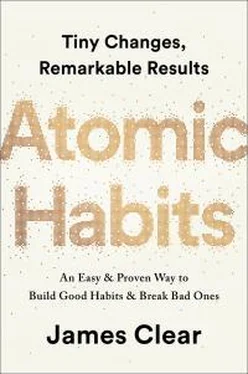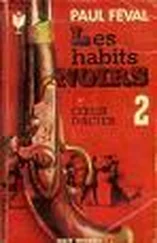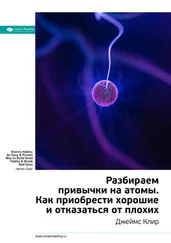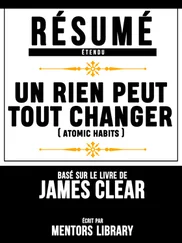Usually, this minor dip in performance is no cause for worry. You don’t need a system to continuously improve how well you brush your teeth or tie your shoes or make your morning cup of tea. With habits like these, good enough is usually good enough. The less energy you spend on trivial choices, the more you can spend it on what really matters.
However, when you want to maximize your potential and achieve elite levels of performance, you need a more nuanced approach. You can’t repeat the same things blindly and expect to become exceptional. Habits are necessary, but not sufficient for mastery. What you need is a combination of automatic habits and deliberate practice.
Habits + Deliberate Practice = Mastery
To become great, certain skills do need to become automatic. Basketball players need to be able to dribble without thinking before they can move on to mastering layups with their nondominant hand. Surgeons need to repeat the first incision so many times that they could do it with their eyes closed, so that they can focus on the hundreds of variables that arise during surgery. But after one habit has been mastered, you have to return to the effortful part of the work and begin building the next habit.
Mastery is the process of narrowing your focus to a tiny element of success, repeating it until you have internalized the skill, and then using this new habit as the foundation to advance to the next frontier of your development. Old tasks become easier the second time around, but it doesn’t get easier overall because now you’re pouring your energy into the next challenge. Each habit unlocks the next level of performance. It’s an endless cycle.
MASTERING ONE HABIT
MASTERING A FIELD
FIGURE 16: The process of mastery requires that you progressively layer improvements on top of one another, each habit building upon the last until a new level of performance has been reached and a higher range of skills has been internalized.
Although habits are powerful, what you need is a way to remain conscious of your performance over time, so you can continue to refine and improve. It is precisely at the moment when you begin to feel like you have mastered a skill—right when things are starting to feel automatic and you are becoming comfortable—that you must avoid slipping into the trap of complacency.
The solution? Establish a system for reflection and review.
HOW TO REVIEW YOUR HABITS AND MAKE ADJUSTMENTS
In 1986, the Los Angeles Lakers had one of the most talented basketball teams ever assembled, but they are rarely remembered that way. The team started the 1985–1986 NBA season with an astounding 29–5 record. “The pundits were saying that we might be the best team in the history of basketball,” head coach Pat Riley said after the season. Surprisingly, the Lakers stumbled in the 1986 playoffs and suffered a season-ending defeat in the Western Conference Finals. The “best team in the history of basketball” didn’t even play for the NBA championship.
After that blow, Riley was tired of hearing about how much talent his players had and about how much promise his team held. He didn’t want to see flashes of brilliance followed by a gradual fade in performance. He wanted the Lakers to play up to their potential, night after night. In the summer of 1986, he created a plan to do exactly that, a system that he called the Career Best Effort program or CBE.
“When players first join the Lakers,” Riley explained, “we track their basketball statistics all the way back to high school. I call this Taking Their Number. We look for an accurate gauge of what a player can do, then build him into our plan for the team, based on the notion that he will maintain and then improve upon his averages.”
After determining a player’s baseline level of performance, Riley added a key step. He asked each player to “improve their output by at least 1 percent over the course of the season. If they succeeded, it would be a CBE, or Career Best Effort.” Similar to the British Cycling team that we discussed in Chapter 1, the Lakers sought peak performance by getting slightly better each day.
Riley was careful to point out that CBE was not merely about points or statistics but about giving your “best effort spiritually and mentally and physically.” Players got credit for “allowing an opponent to run into you when you know that a foul will be called against him, diving for loose balls, going after rebounds whether you are likely to get them or not, helping a teammate when the player he’s guarding has surged past him, and other ‘unsung hero’ deeds.”
As an example, let’s say that Magic Johnson—the Lakers star player at the time—had 11 points, 8 rebounds, 12 assists, 2 steals, and 5 turnovers in a game. Magic also got credit for an “unsung hero” deed by diving after a loose ball (+1). Finally, he played a total of 33 minutes in this imaginary game.
The positive numbers (11 + 8 + 12 + 2 + 1) add up to 34. Then, we subtract the 5 turnovers (34–5) to get 29. Finally, we divide 29 by 33 minutes played.
29/33 = 0.879
Magic’s CBE number here would be 879. This number was calculated for all of a player’s games, and it was the average CBE that a player was asked to improve by 1 percent over the season. Riley compared each player’s current CBE to not only their past performances but also those of other players in the league. As Riley put it, “We rank team members alongside league opponents who play the same position and have similar role definitions.”
Sportswriter Jackie MacMullan noted, “Riley trumpeted the top performers in the league in bold lettering on the blackboard each week and measured them against the corresponding players on his own roster. Solid, reliable players generally rated a score in the 600s, while elite players scored at least 800. Magic Johnson, who submitted 138 triple-doubles in his career, often scored over 1,000.”
The Lakers also emphasized year-over-year progress by making historical comparisons of CBE data. Riley said, “We stacked the month of November 1986, next to November 1985, and showed the players whether they were doing better or worse than at the same point last season. Then we showed them how their performance figures for December 1986, stacked up against November’s.”
The Lakers rolled out CBE in October 1986. Eight months later, they were NBA champions. The following year, Pat Riley led his team to another title as the Lakers became the first team in twenty years to win back-to-back NBA championships. Afterward, he said, “Sustaining an effort is the most important thing for any enterprise. The way to be successful is to learn how to do things right, then do them the same way every time.”
The CBE program is a prime example of the power of reflection and review. The Lakers were already talented. CBE helped them get the most out of what they had, and made sure their habits improved rather than declined.
Reflection and review enables the long-term improvement of all habits because it makes you aware of your mistakes and helps you consider possible paths for improvement. Without reflection, we can make excuses, create rationalizations, and lie to ourselves. We have no process for determining whether we are performing better or worse compared to yesterday.
Top performers in all fields engage in various types of reflection and review, and the process doesn’t have to be complex. Kenyan runner Eliud Kipchoge is one of the greatest marathoners of all time and an Olympic gold medalist. He still takes notes after every practice in which he reviews his training for the day and searches for areas that can be improved. Similarly, gold medal swimmer Katie Ledecky records her wellness on a scale of 1 to 10 and includes notes on her nutrition and how well she slept. She also records the times posted by other swimmers. At the end of each week, her coach goes over her notes and adds his thoughts.
Читать дальше




![Джеймс Клир - Атомные привычки [Как приобрести хорошие привычки и избавиться от плохих]](/books/403243/dzhejms-klir-atomnye-privychki-kak-priobresti-horosh-thumb.webp)



